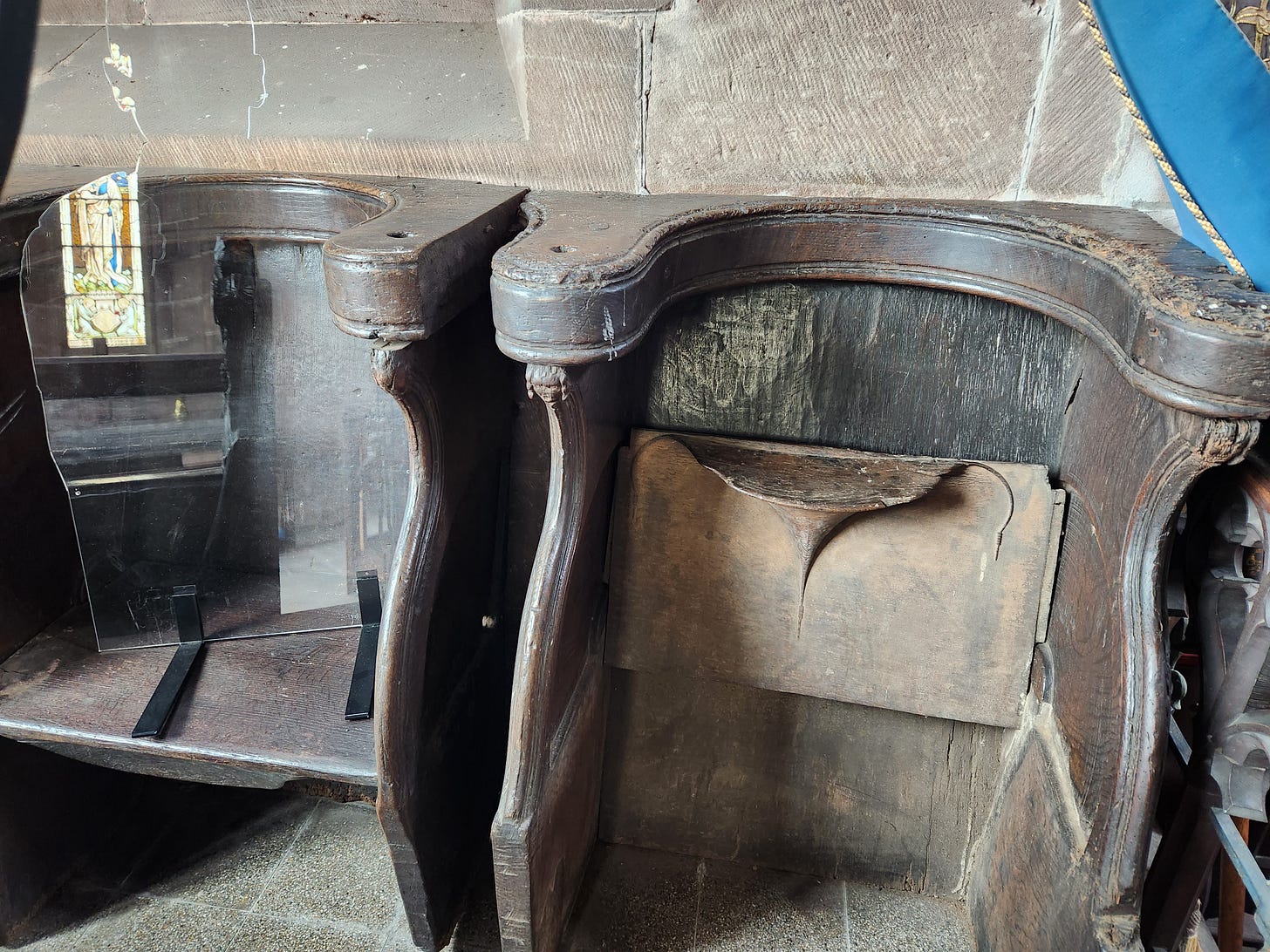I’ve been planning a post on misericords for some time. Belatedly, I realised -when I looked at my book in which I list the marvellous church art and architecture I’ve seen - that I couldn’t cover them in one post. So this is the first of a series.
Bagpipe-playing pigs at Ripon. Why? Who knows?
First, a recap on what a misericord (or misericorde) is. When saying the Divine Office, communities of monks, nuns, canons or secular clerics are required to stand for much of it. In the rule of St Benedict, the only mention of sitting is during the night office/matins, when the monks are directed to sit in order on the benches. That’s it; the rest of the time they stand. This covers several hours a day, so monks devised a way of standing while seated. The word misericord comes from the Latin for mercy, and so this was a small relaxation to help the monks fulfill their duties.
Misericords are placed in individual “stalls” which are allocated to particular monks, in order of entry. At Great Budworth we have some 13th century stalls.
Keep reading with a 7-day free trial
Subscribe to Incola ego sum in terra to keep reading this post and get 7 days of free access to the full post archives.





